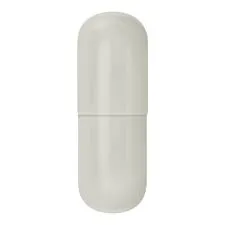
Nov . 30, 2024 02:51 Back to list
Exploring the Influence of HPMC on Glass Transition Temperature in Polymer Systems
Understanding the Glass Transition Temperature in HPMC
Hydroxypropyl methylcellulose (HPMC) is a cellulose derivative that has garnered significant attention in various industries, including pharmaceuticals, food, and cosmetics. One of the most critical thermal properties of HPMC, as well as other polymers, is the glass transition temperature (Tg). The glass transition temperature refers to the temperature range where a polymer transitions from a hard, glassy state to a soft, rubbery state. This phenomenon is crucial for understanding the behavior of HPMC in different environments and applications.
The Importance of Glass Transition Temperature
The glass transition temperature of HPMC significantly influences its mechanical, thermal, and rheological properties. In pharmaceutical formulations, for instance, the Tg can affect the stability of drug products, particularly in solid dosage forms. When HPMC is subjected to heat, its ability to undergo changes at the Tg can determine the release characteristics of active pharmaceutical ingredients. A higher Tg indicates greater thermal stability and less likelihood of drug degradation, making it a crucial parameter during formulation development.
Factors Affecting Tg in HPMC
The glass transition temperature of HPMC is influenced by various factors, including its degree of substitution, molecular weight, and the presence of plasticizers or other additives. The degree of substitution refers to the number of hydroxyl groups on the cellulose chain that have been replaced by hydroxypropyl and methyl groups. Generally, increasing the degree of substitution increases the solubility of HPMC in water, but it can also lead to changes in Tg. For instance, HPMC with a lower degree of substitution tends to have a higher Tg due to a more rigid molecular structure.
Molecular weight is another significant parameter. Higher molecular weight HPMC generally exhibits a higher Tg due to increased chain entanglement, which makes it more resistant to flow and deformation at elevated temperatures. Conversely, lower molecular weight HPMC tends to have a lower Tg, which can facilitate easier processing and application in various formulations.
hpmc glass transition temperature

Additionally, the incorporation of plasticizers can dramatically lower Tg by providing free volume within the polymer matrix. Plasticizers work by interrupting the intermolecular forces between polymer chains, thus enhancing their mobility. Common plasticizers used in HPMC formulations include glycerin, sorbitol, and polyethylene glycol (PEG). The choice and concentration of plasticizers, however, should be optimized carefully, as excessive amounts can lead to a reduction in the mechanical strength of the final product.
Applications of HPMC and Its Tg
Due to its unique properties and the significance of its Tg, HPMC finds extensive applications. In the pharmaceutical industry, HPMC is commonly used as a binder, film-forming agent, and controlled-release agent in tablet formulations. The Tg plays a pivotal role in determining the rate at which drugs are released from matrices containing HPMC.
In the food industry, HPMC serves as a thickening agent and stabilizer, and its Tg can influence texture and mouthfeel. Understanding the Tg also aids in optimizing processing conditions during food manufacturing, ensuring product quality and consistency.
In cosmetics, HPMC is used for its thickening and emulsifying properties. The ability to manipulate Tg through formulation strategies allows cosmetic scientists to create products that meet specific consumer needs, such as creams that feel light on the skin yet provide adequate moisturization.
Conclusion
The glass transition temperature of HPMC is a fundamental characteristic that affects its physical and chemical behavior across a variety of applications. Understanding the Tg allows scientists and formulators to tailor HPMC's properties for specific uses, ensuring the stability and effectiveness of the final products. As research and development in polymer science continue to advance, the significance of Tg in materials like HPMC will only grow, driving innovation in numerous fields. Understanding these thermal properties is essential for the future development of high-performance, stable formulations that meet the demands of modern consumers.
-
Unlocking the Benefits of HPMC Products: A Gateway to Versatile Applications
NewsAug.07,2025
-
Unleashing the Potential of HPMC Ashland: A Comprehensive Look
NewsAug.07,2025
-
Tile Bonding Cellulose: The Key to Superior Adhesion and Durability
NewsAug.07,2025
-
Hydroxypropyl Methylcellulose Powder: The Versatile Component in Modern Pharmaceuticals
NewsAug.07,2025
-
Hydroxyethyl Cellulose: The Versatile Solution for Various Industries
NewsAug.07,2025
-
Hydroxyethyl Cellulose (HEC): The Versatile Polymer for Various Applications
NewsAug.07,2025







